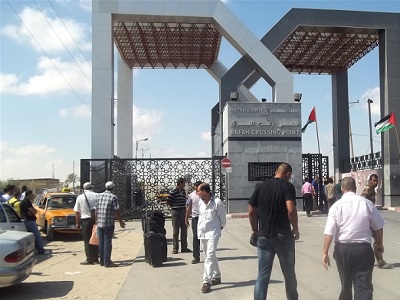
New data released by a United Nations agency and an Israeli NGO has confirmed that Israel’s blockade on the Gaza Strip actually tightened during July.
The UN Office for the Coordination of Humanitarian Affairs, OCHA’s monthly update for July reports that the number of crossings at Erez was 15 percent below the 2016 monthly average, and just 30 percent of the monthly average in 2004.
Meanwhile, at the Israeli-controlled Kerem Shalom crossing, a total of just 157 truckloads of goods exited for sale outside of the Gaza Strip, which is less than the average for the first half of 2016.
New data released by a United Nations agency and an Israeli NGO has confirmed that Israel’s blockade on the Gaza… https://t.co/ZMl7X8Dpyl
— antonio maniscalco (@antoniomanisca4) August 16, 2016
With regards to entry of goods, Kerem Shalom operated for 19 out of 26 scheduled days, with the volume of imports also down compared to the monthly average during the first half of 2016. Construction materials made up 60 percent of all truckloads of goods entering Gaza during July.
Rafah, meanwhile, was opened for just three days during the month. The Egyptian authorities have only opened the Rafah crossing for 53 days since October 2014.
Israeli NGO Gisha recently updated its ‘Gaza Cheat Sheet’, which begins by noting that in the 2nd quarter of 2016, the unemployment rate in the Gaza Strip was 41.7 percent, and 57.6 per cent among young people. More than 70 percent of the population relies on humanitarian aid.
For the facts on Israel's blockade, scroll down to "Entrance of goods into #Gaza" by Israeli NGO @Gisha_Access https://t.co/nufzt3r2cU
— Sunjeev Bery (@SunjeevBery) November 10, 2015
According to Gisha, “Israel allows civilian goods to enter Gaza, other than an extensive list of items that it defines as “dual-use”, which it claims may be used for military purposes.” This list includes “dozens of items needed for industry and maintenance of civilian infrastructure.”
Gisha states, “Through its control of the Palestinian population registry, Israel retains indirect control over the issuing of Palestinian passports, which are required for travel through Rafah.”
Gisha also states that, “Since Operation Protective Edge, the fishing zone has been limited to six nautical miles from the coast with the exception of a temporary expansion to nine miles in April-May, 2016.”
#EndGazaSiege Human suffering at #Rafah Crossing
Blame #Egypt too not just #israel they are as guilty!! pic.twitter.com/EM1Ia9c6kN— Abbs Winston (@AbbsWinston) June 1, 2016
“The size of the ‘buffer zone’ on land, which is off-limits to Palestinians, stands at 300 meters from the border with Israel, but according to correspondence with Israeli officials, farmers can enter lands up to a distance of 100 meters from the border, with unspecified coordination.”
(MEMO, PC)





